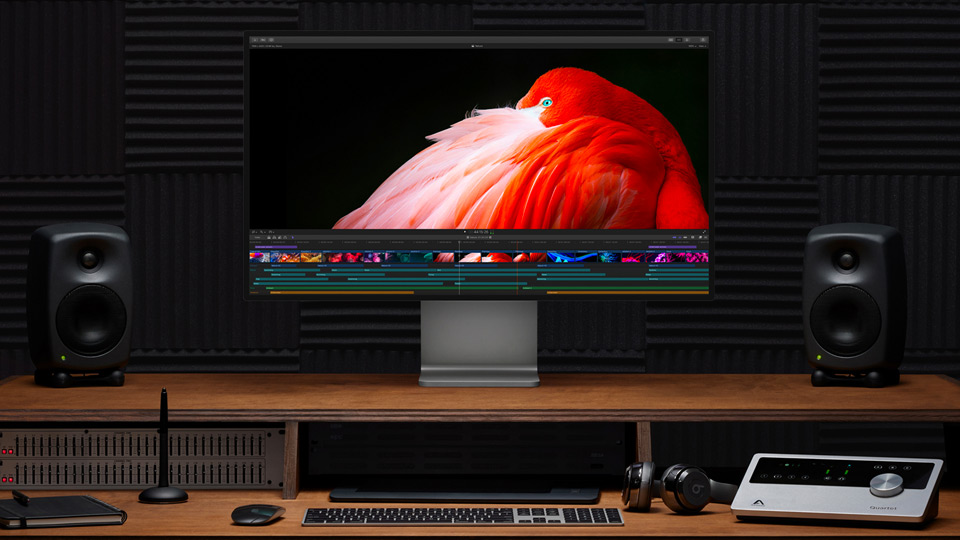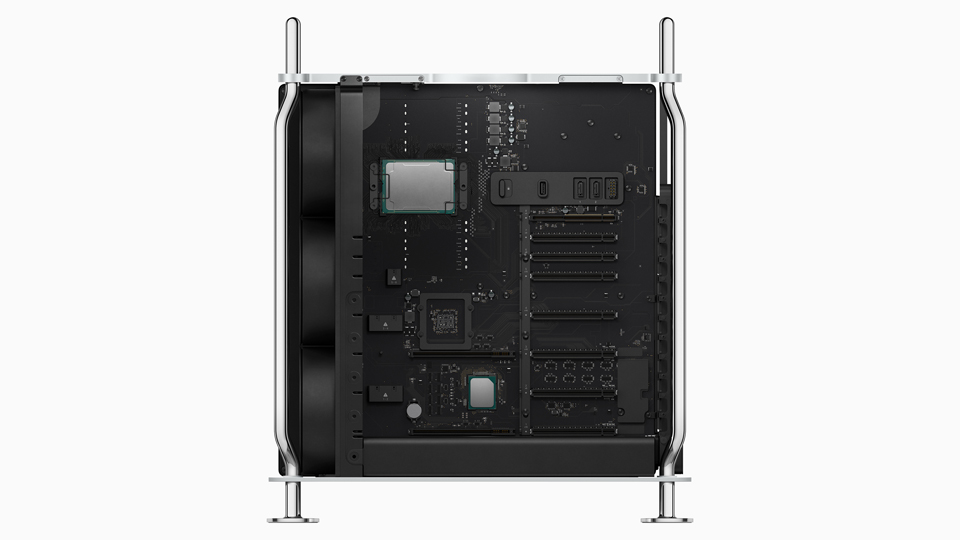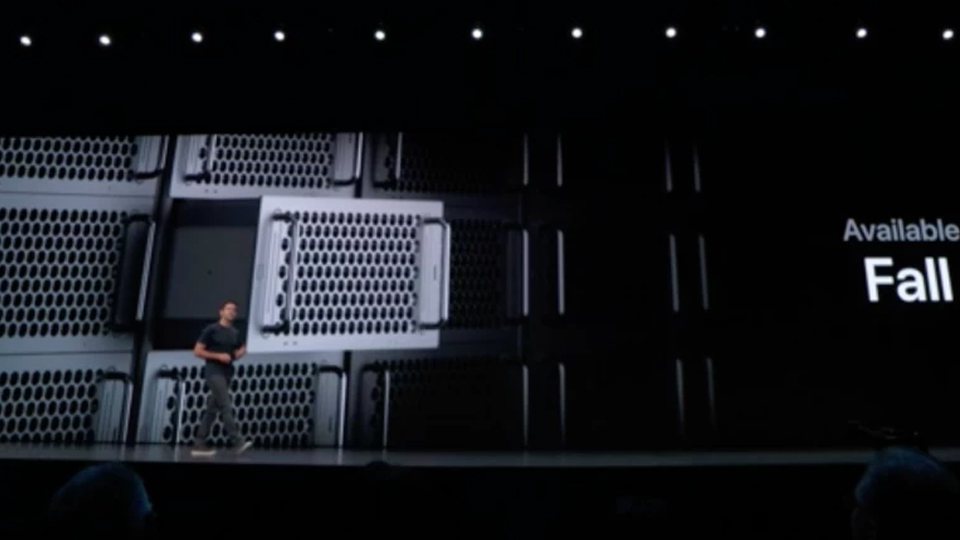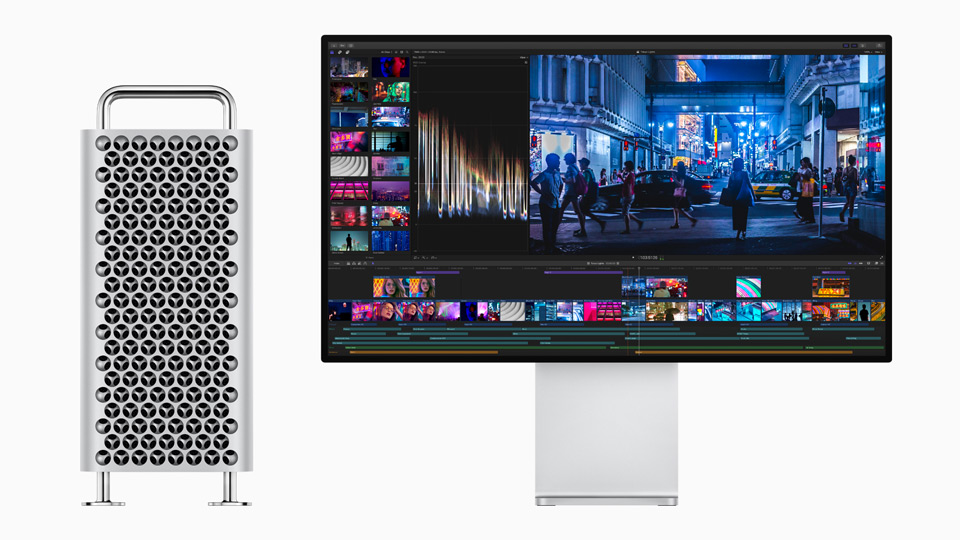The wait is finally over. Just 6 years since the release of the last Mac Pro, lovingly dubbed “The Trashcan,” Apple has announced a brand new Mac Pro that harkens back to the original 2006 version. The new Mac Pro pays fromage to the cheese-grater design of its predecessor, but there’s nothing cheesy under the hood. In fact, the Mac Pro announced at WWDC marks a significant turning point in Apple’s quest to win back the post-production and VFX professionals.
Until recently, Apple had been under fire from critics who have accused them of abandoning the pro community in favor of iOS updates and talking emojis—but the tide is changing, and it seems like Apple is finally ready to make bold moves in a direction other than mobile. Four major hardware updates and several significant improvements to Final Cut Pro X and ProRes later, we can see a renewed commitment to creative pros. There’s no question that the new Mac Pro is going to have a lasting impact in post houses and studios around the world, the same way that Xsan, Final Cut Pro 7, and the original Mac Pro have.
Insane I/O
One of the main design principles of the new Mac Pro is expansion, and one of the things we’re most excited for is the new Mac Pro’s I/O specs. The system touts an impressive total of eight PCI Express card expansion slots, two MPX bays which can be used as four PCIe slots, three full-length PCIe slots, and one half-length. By default, the system will ship with two USB 3 ports, four Thunderbolt 3 ports, and two 10Gigabit Base-T Ethernet ports. If you saw our post after the last iMac Pro release, you know we’re thrilled to see more native 10Gb Ethernet support. For one, it makes it incredibly simple to connect to a video editing shared storage server, and it means you’ll never have to buy another Thunderbolt chassis.
Apple highlighted some incredibly demanding workflows during WWDC. Those workflows are not only demanding on the workstation hardware like the CPU and GPU but on network bandwidth as well. Many pro workflows require files and projects to be shared on a high speed, secure, and centralized storage server so that multiple users can access media from any workstation. In some cases, like 8K editorial or 4K finishing and color grading, 10Gigabit Ethernet just isn’t fast enough—that’s when those PCIe slots will really come in handy. By adding a 25, 40, 50, or even 100Gb expansion, you’ll be able to get more Ethernet bandwidth (more on this later in the article) to support the demanding workflows made possible with the new Mac Pro.
Back in Rack
We got a little nostalgic when we saw that the Mac Pro will be rack-mountable (RIP Xserve). Although it’s not a new idea, it highlights that Apple is serious about providing a workstation that meets the requirements of many high-end post-production and visual effects shops. Rack mounting the Mac Pro can make high-speed networking easier by bringing it closer to your switch, facilitate improved power and cooling infrastructure, and enable shops to take advantage of third-party data centers where they can offload rendering to Mac Pros in the cloud.
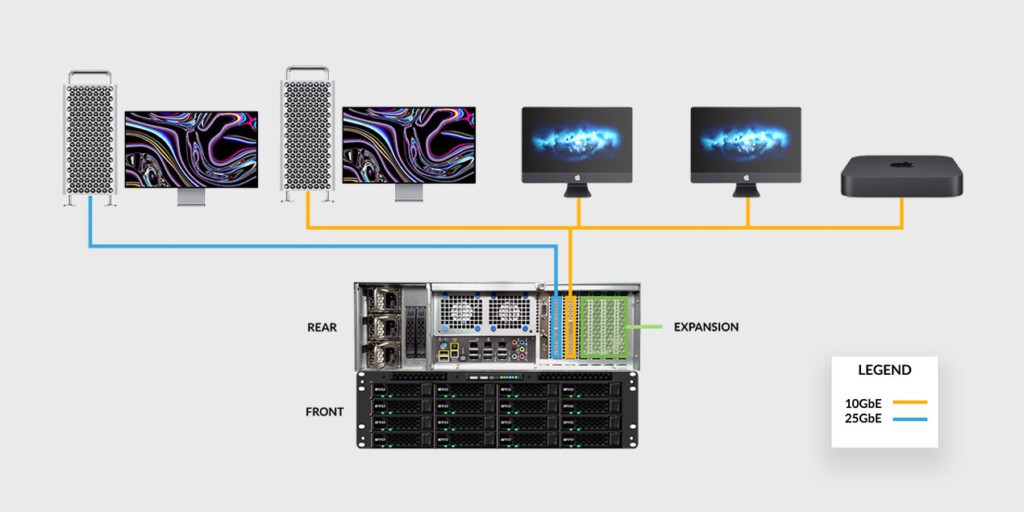
ProRes RAW in the Spotlight
ProRes, one of Apple’s most significant contributions to the pro market, got a lot of attention during WWDC 2019. The new Mac Pro is capable of playing back up to three streams of 8K ProRes RAW, a performance benchmark that continuously popped up during the presentation. This was one of the most interesting points of the announcement, not just because it highlights the sheer power of the Mac Pro hardware, but because of what it says about the state of the industry. We’re entering an era where it’s possible for shared storage and workstation hardware to support native 4K, 6K, and even 8K post-production. The focus on ProRes RAW also had implications beyond just the Mac Pro and gave us a glimpse into what the supporting ecosystem might look like.
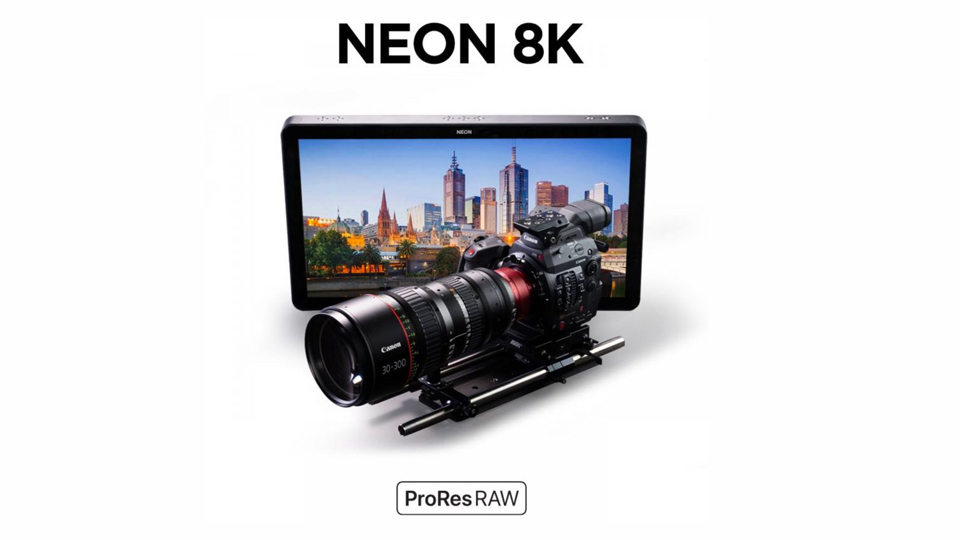
Adobe, Autodesk, ATTO, Avid, Blackmagic Design, Unreal, Otoy, RED, and many other companies have already partnerships with Apple to support this ecosystem. It’s possible that this means we will see more applications doing fine-tuning to support the Mac Pro hardware, and better support for ProRes RAW across the board, whether that’s in editorial, finishing, or acquisition. We also wonder about the possibility of using the new Afterburner card to accelerate other tasks. So far, Apple has said that is designed to accelerate ProRes and ProRes RAW workflows, but since the card uses a special chip called an FPGA (Field Programmable Gate Array) it’s possible that other manufacturers may be able to optimize it for other specific workflows with Blackmagic RAW, REDCODE RAW, or ARRIRAW, for example.
Final Cut (Now With Even More Pro)
Although Avid and Blackmagic Design got some screen time during the presentation, FCP X dominated the show. It should come as no surprise that Apple wants to establish it as a high-end NLE, and at WWDC it showed. The upcoming version (to be released alongside the Mac Pro this Fall) will be optimized for work with the new Mac Pro. That means the next version of Final Cut Pro will be able to take advantage of all the GPUs, use multithreading to distribute tasks across up to 28 CPU cores, and deliver impressive performance when equipped with the new Afterburner card. According to Apple’s site, the upcoming fall release of Final Cut Pro X will be able to deliver:
4K ProRes RAW Performance
ProRes transcoding
Rendering
Demanding workflows need storage that can keep up. Compare our codec stream counts and learn how many 4K ProRes RAW streams you can get with EVO.
Some of the more recent updates to Final Cut Pro have added better color grading tools, and included support for HDR and 360° workflows. We’re hopeful that future releases will include IMF management (either through third parties or from Apple) and *fingers crossed* more advanced collaborative features a la Avid Bin Sharing, Resolve Collaboration, and Adobe Team Projects.
The Future of SMB
Not that we expected Apple to talk about something mundane like Ethernet performance during their big WWDC presentation, but we wished they had. In recent years Apple has stepped away from their own AFP network protocol—which was usually a decent out-of-the-box performer—in favor of SMB. This is a great thing for interoperability and standardization, but while Apple has made notable improvements to its SMB implementation over the last few releases, we’d like to see more. Something along the lines of SMB Direct, a feature that allows SMB to use the high throughput, low latency offered by RDMA-capable network adapters, would be fantastic, but we’re not holding our breath. Our hope is that the SMB implementation in macOS doesn’t have to be the next big bottleneck to wrestle down and overcome for those who spend a fortune on a new Mac Pro and want to do extremely high-throughput work (think multiple gigabytes per second) with shared storage over SMB.
The Takeaway
Don’t need ultra-fast render speeds, 28 CPU cores, and the accelerated GPUs available in the fully decked out Mac Pro? The iMac Pro and Mac Mini are excellent systems for the majority of pro users. Where the Mac Pro will really shine is in Digital Intermediate and Finishing suites where high-speed networking and state of the art GPUs will make playing back high bit-depth, high-resolution image sequences like DPX and OpenEXR smooth as butter. 4K, 6K, and 8K editorial will benefit as well, especially in digital content workflows where you’ll be able to quickly flip your native high res camera files, add titles, brand motion graphics, and other effects, and render out multiple aspect ratios at lightning speed. Although it’s not appropriate for the majority of video editors, motion designers, and other creative pros, the Mac Pro is a highly focused machine that will likely satisfy the top 1% of high-end workflows better than almost any other workstation on the market.
If you’re planning on buying a new Mac Pro, you’ll need storage that can keep up. Click here to learn how we can help.

